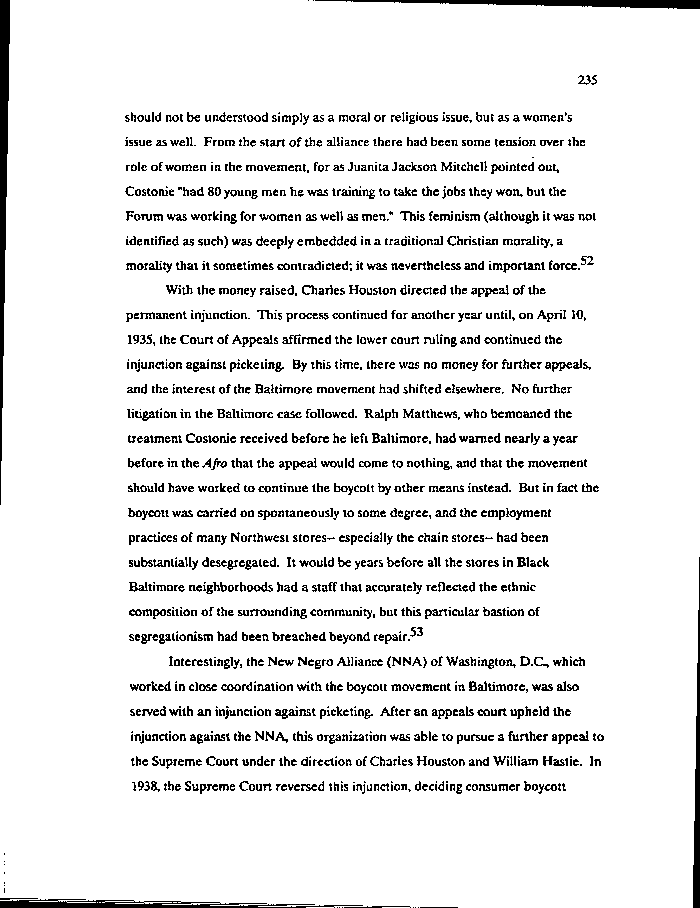|
235
should not be understood simply as a moral or religious issue, but as a women's
issue as well. From the start of the alliance there had been some tension over the
role of women in the movement, for as Juanita Jackson Mitchell pointed out,
Costonie "had 80 young men he was training to take the jobs they won, but the
Forum was working for women as well as men." This feminism (although it was not
identified as such) was deeply embedded in a traditional Christian morality, a
morality that it sometimes contradicted; it was nevertheless and important force.
With the money raised, Charles Houston directed the appeal of the
permanent injunction. This process continued for another year until, on April 10,
1935, the Court of Appeals affirmed the lower court ruling and continued the
injunction against picketing. By this time, there was no money for further appeals,
and the interest of the Baltimore movement had shifted elsewhere. No further
litigation in the Baltimore case followed. Ralph Matthews, who bemoaned the
treatment Costonie received before he left Baltimore, had warned nearly a year
before in the Afro that the appeal would come to nothing, and that the movement
should have worked to continue the boycott by other means instead. But in fact the
boycott was carried on spontaneously to some degree, and the employment
practices of many Northwest stores- especially the chain stores— had been
substantially desegregated. It would be years before all the stores in Black
Baltimore neighborhoods had a staff that accurately reflected the ethnic
composition of the surrounding community, but this particular bastion of
segregationism had been breached beyond repair.^
Interestingly, the New Negro Alliance (NNA) of Washington, D.C., which
worked in close coordination with the boycott movement in Baltimore, was also
served with an injunction against picketing. After an appeals court upheld the
injunction against the NNA, this organization was able to pursue a further appeal to
the Supreme Court under the direction of Charles Houston and William Hastie. In
1938, the Supreme Court reversed this injunction, deciding consumer boycott
|

